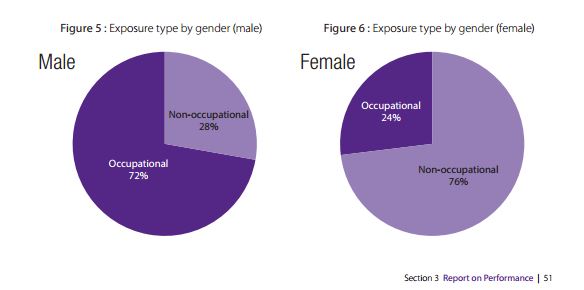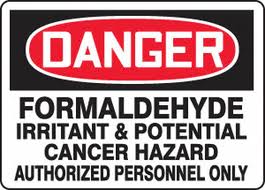Entries tagged with “cancer”.
Did you find what you wanted?
Wed 30 Dec 2015
Posted by admin under Asbestos, Dust, Ethics, Exposure, Hazard Communication, occupational hygiene
Comments Off on Asbestos – same hazard, new disease
It’s probably not a new disease, but there are more cases being discovered for type of cancer called, peritoneal mesothelioma. This cancer is found in the stomach, and is cause from eating asbestos (probably not on purpose, but through the body’s normal ability to capture particulates). They are calling this cancer the “third wave”, in addition to asbestosis and mesothelioma (in lungs).
The Center for Public Integrity released a video and article on a dramatic case, Kris Penny, on Dec 17, 2015. NPR picked it up and posted it here. Hopefully more people will be aware of this type of cancer and it can be better reported/diagnosed.
In a related article, from Newser, they suppose this type of cancer is from home exposures, rather than occupational. This information was based upon Australia’s Asbestos Safety & Eradication Agency‘s 2015 report.  They claim:
- 40.64% (568) of people had exposures from non-occupational exposures (they are self reporting for the Australian registry).
- 20% (280) of all registration of exposure were women.
- 62.6% (876) of reported exposures were under the age of 49
- The “third wave” of asbestos exposures will be from DIYs

Unfortunately new exposures are still occuring, especially in developing countries. There is an effort to stop asbestos use in these countries, and you can join one group, Global Alliance Against Asbestos.
Wed 27 Feb 2013
Posted by admin under ACGIH, Air Monitoring, Carcinogen, Chemical Exposure, Exposure, Federal OSHA, Formaldehyde, insulation, odor thresholds, Olfactory, PEL (Perm Exp Limit), Proposition 65
Comments Off on Formaldehyde in construction
From what I have seen, there are not a large amount of formaldehyde exposures in construction. However, there is A LOT of formaldehyde used in construction materials. Formaldehyde can be dangerous at levels undetectable by your nose. And, the symptoms of exposure are nondescript (irritant & tingling of eyes, nose, respiratory tract).
Here are some products that may contain trace (or more) amounts of formaldehyde:
- resins in plywood, MDF, CDX, particle board/fiber board
- garage doors
- drywall
- roofing
- glues / mastics
- paint/coatings
- carpets
- insulation (spray in and batting)
I believe the reason we do not see high exposures is due to the limited duration of exposure, and the open-aired nature during the construction. Some exceptions are warehouses with large storage areas of particle board/MDF. (I have found exposures in these areas)
The OSHA exposure limit for formaldehyde is 0.75 ppm (action limit of 0.5 ppm, and short term limit of 2 ppm). However, this may not be low enough, based upon other standards (ACGIH says 0.3 ppm, NIOSH 0.1 ppm)
Another major issue with this hazard in construction is once the space is occupied.
- Once construction is done, the space may be sealed up, heated, and additional curing can occur.
- This may release more formaldehyde, and also NOT allow as much to escape (by dilution ventilation).
- Compounding this issue are the type of occupants in the building. Are there children, non-working adults, immunocompromised individuals, sick, or elderly occupying this space? The OSHA standards are NOT protective for these types of people.
I do not forsee this type of sign being posted immediately after new construction.
 On the plus side, someone has discovered that plants may help reduce formaldehyde & VOC levels in homes. Horticulture Science Kwang Jim Kim, et.al
On the plus side, someone has discovered that plants may help reduce formaldehyde & VOC levels in homes. Horticulture Science Kwang Jim Kim, et.al
Fri 15 Jun 2012
Posted by admin under Air Monitoring, Carcinogen
Comments Off on Diesel exhaust = Carcinogen!
It was recently declared that diesel exhaust is a carcinogen by the World Health Organization’s (WHO) International Agency for Research on Cancer (link to the press release). As you know, a carcinogen is a substance known to cause cancer. The most well known carcinogens are cigarette smoke, benzene, and asbestos.

If you are in construction you probably know how many pieces of equipment use diesel…LOTS. In fact, heavy highway and large commercial construction use it almost exclusively. And, if you have ever traveled out of the US, you realize that diesel is used a lot more than gas. Don’t forget trains and commercial trucks.
So, if you think you have possible exposures to diesel exhaust on a regular basis…you should do something. Here are some ideas:
- tune-up (lower emissions, better efficiency)
- direct exhaust away from people/HVAC intake
- exhaust equipment outside
- increase dilution ventilation (usually not recommended for carcinogens)
- make sure the scrubber works
- measure exposures to employees (ask me in 20 years why this is a good idea)
- switch to biodiesel (I actually DO NOT know if this is a safe-alternative, but it does smell better)
Here is another article on it.


